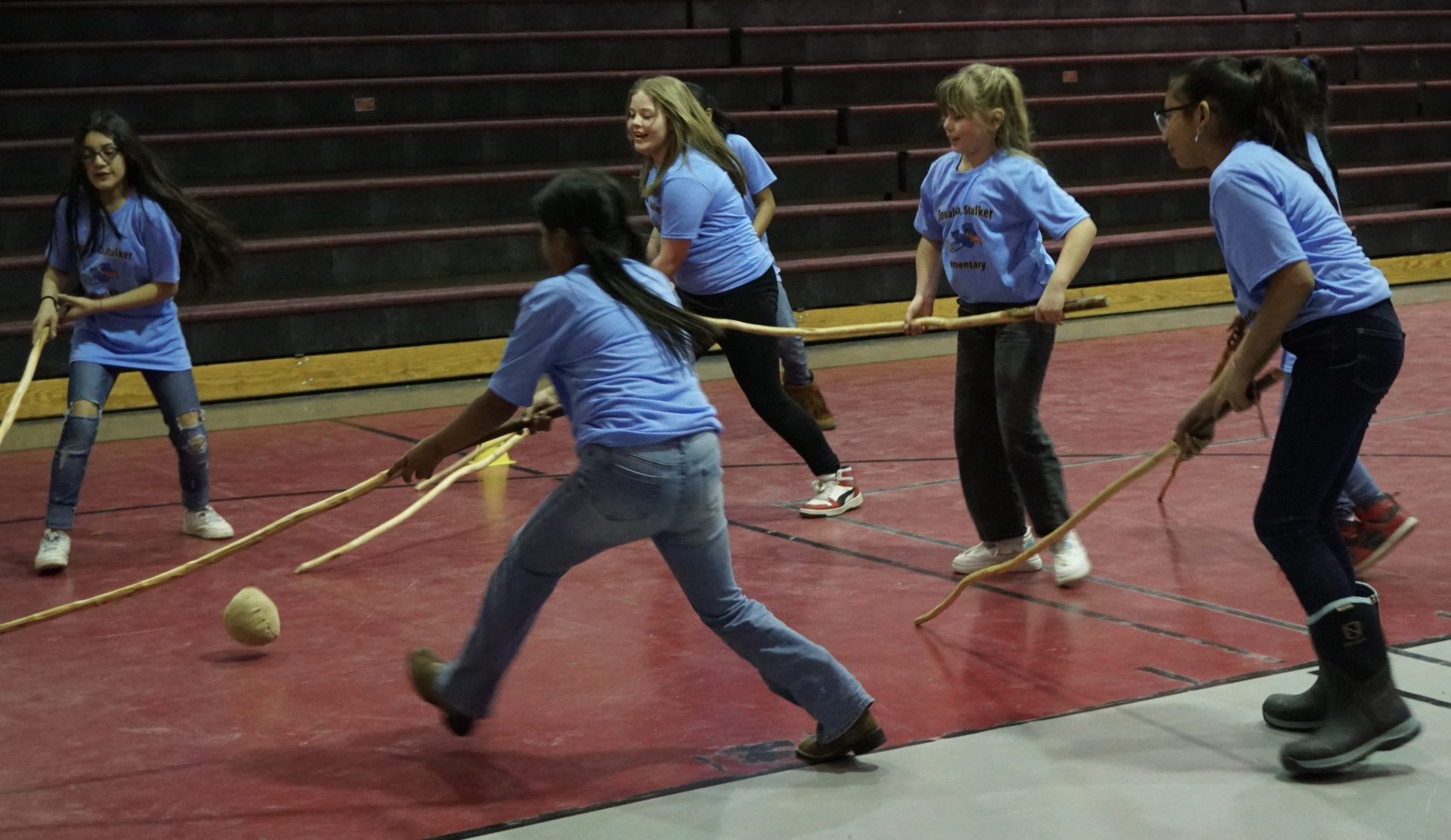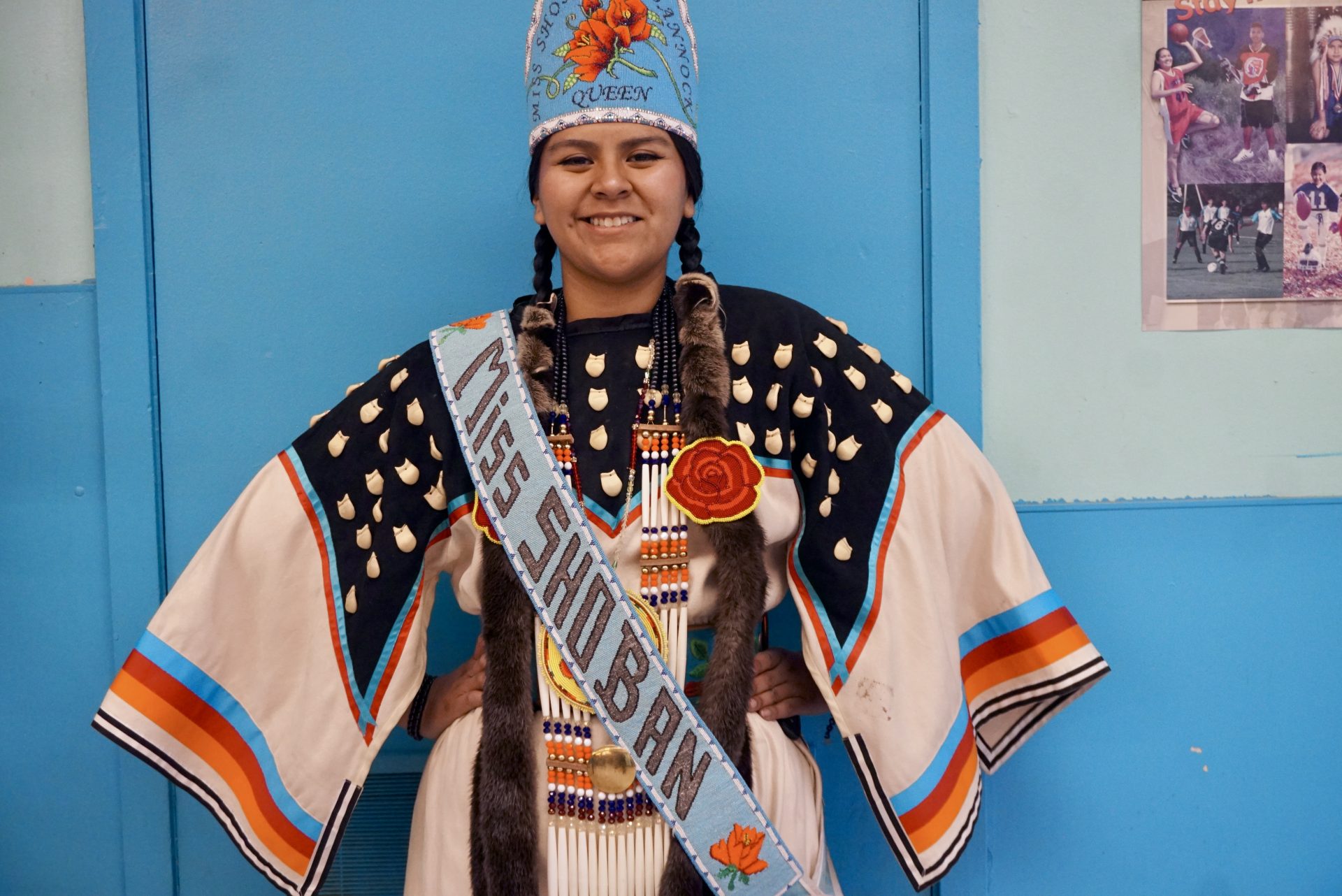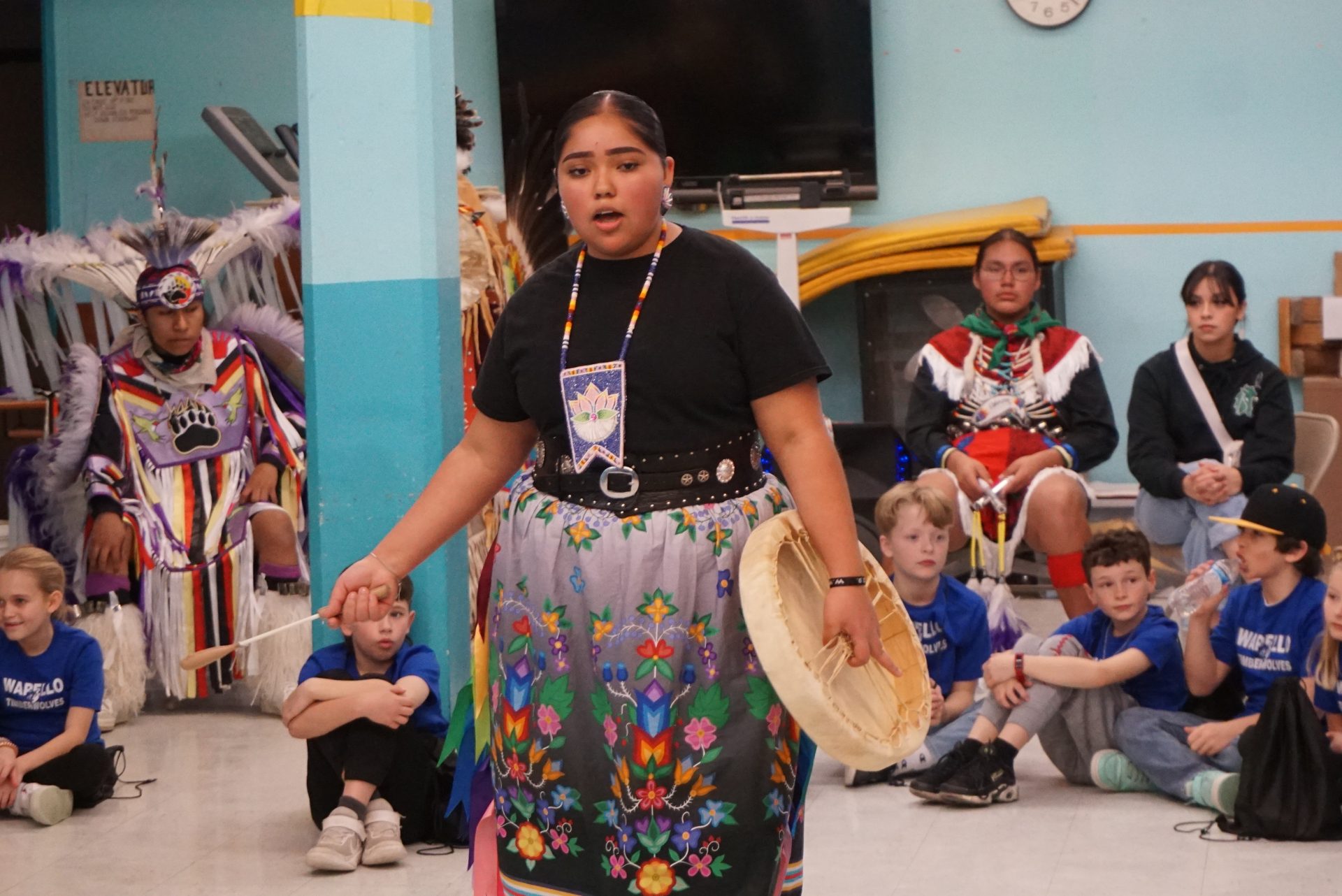Kiya Killsontop wishes that when she was in fourth grade, she would’ve had the opportunity to spend a day with her peers on the Fort Hall Reservation.
The Blackfoot High senior could have told her classmates: “This is where I’m from and I’m not ashamed about it. This is my culture and if you want to learn more, then I’m willing to teach you.”
It’s an opportunity she didn’t get, but one she helped create for today’s fourth graders. Killsontop is a member of Blackfoot High’s Indigenous Club, which organized the second annual Fort Hall field trip held Tuesday.
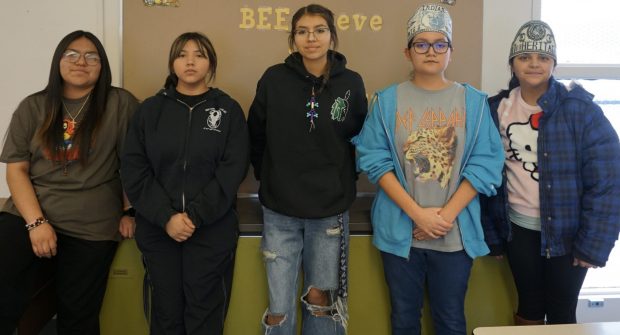
For a day, Blackfoot School District fourth graders — nearly 300 students in all — left their classrooms behind to learn about Idaho’s Shoshone-Bannock Tribes. The learning was interactive — students threw spears, made traditional beadwork crafts, participated in powwow dancing, and listened to elders’ stories.
While Idaho’s content standards call for students to learn about Native Americans from kindergarten to senior year, many myths and stereotypes about Indigenous people persist. After last year’s field trip, for example, Joy Mickelsen said some fourth graders were surprised to learn that Native Americans no longer live in teepees.
That’s where the field trip comes in.
It’s about “building bridges,” Mickelsen, the district’s federal programs director said. “It takes a village to raise a child and our villages can be different.”
She said last year’s inaugural field trip was a success, instilling a sense of pride in Native American students and garnering “phenomenal” feedback, including from three districts across the state that are considering adopting a similar program.
Part of the day’s activities took place at Fort Hall Elementary, which can feel isolated from the rest of the Blackfoot School District, principal Debbie Steele said.
“My kids have a really bad stigma against them that they’re tough, mean kids, but these are some of the sweetest kids I’ve ever met in my life. So I’m just really glad that the rest of the district finally gets to come out and see that.”
Blackfoot High student Lyla Wesaw hopes the field trip will help reduce bullying. Shoshone-Bannock boys are sometimes mocked for their long hair, for example, because peers don’t understand its cultural significance.
“This project is about helping kids learn more as they grow up so they’re not directed the wrong way,” Killsontop said. “I don’t want them to have a bad image of (Shoshone-Bannock people).”
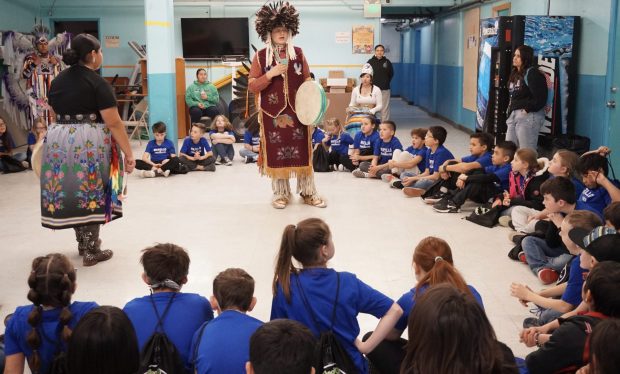
After the field trip, fourth graders are encouraged to write essays about what they learned for a contest with a $500 grand prize. The winners will read their essays at an event on April 16, Mickelsen said.
Behind it all — the organizing, the event itself, the essay-reading and contest oversight — are Indigenous teens, some taking on the leadership roles for their senior project.
“It’s just important that we keep this going on because we impacted these fourth graders last year so much,” Yamni Chandler, a senior at Blackfoot High who helped lead the efforts, said.
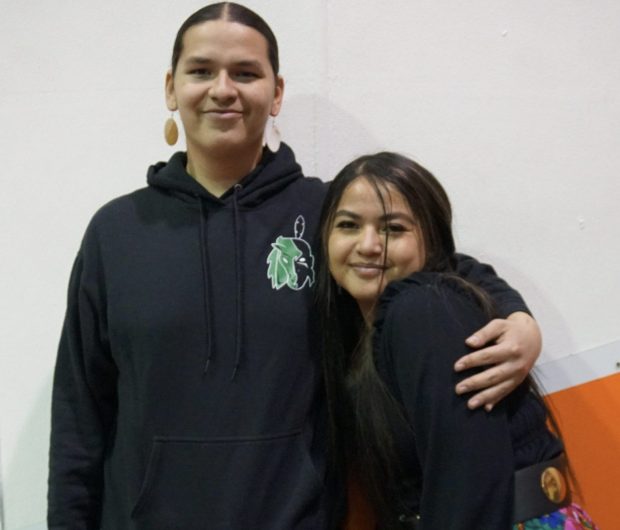
The event was sponsored by the Lillian Vallely Youth Foundation, the Idaho Humanities Council, the Shoshone-Bannock Tribes, the Blackfoot School District, and the Indian Education Committee.
Further reading: Still Here: Tribes fight to be seen in Idaho classrooms

